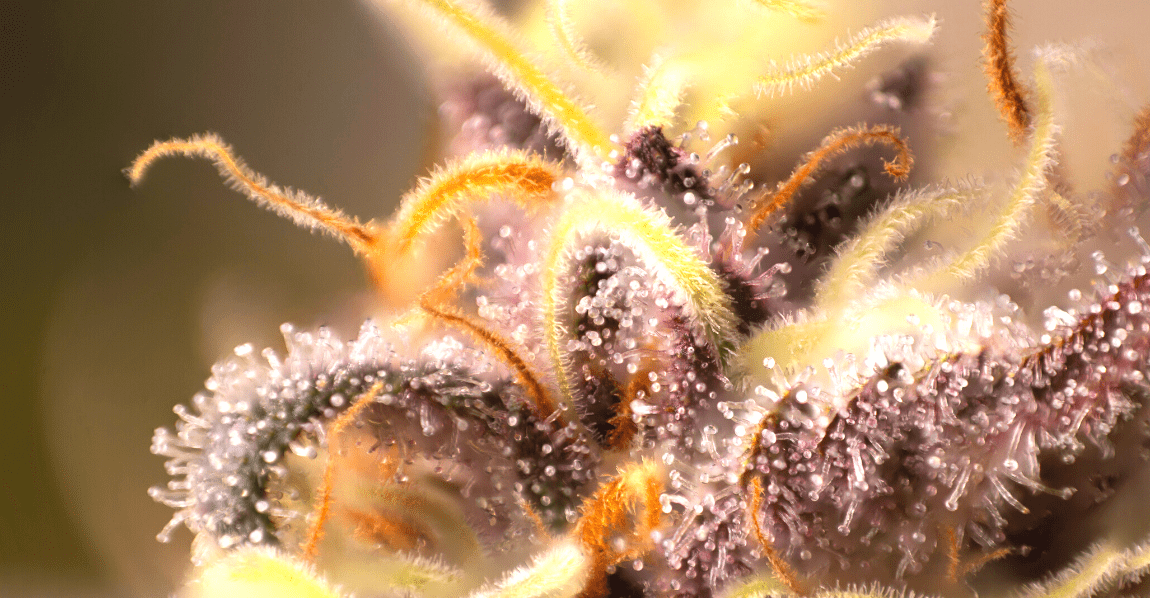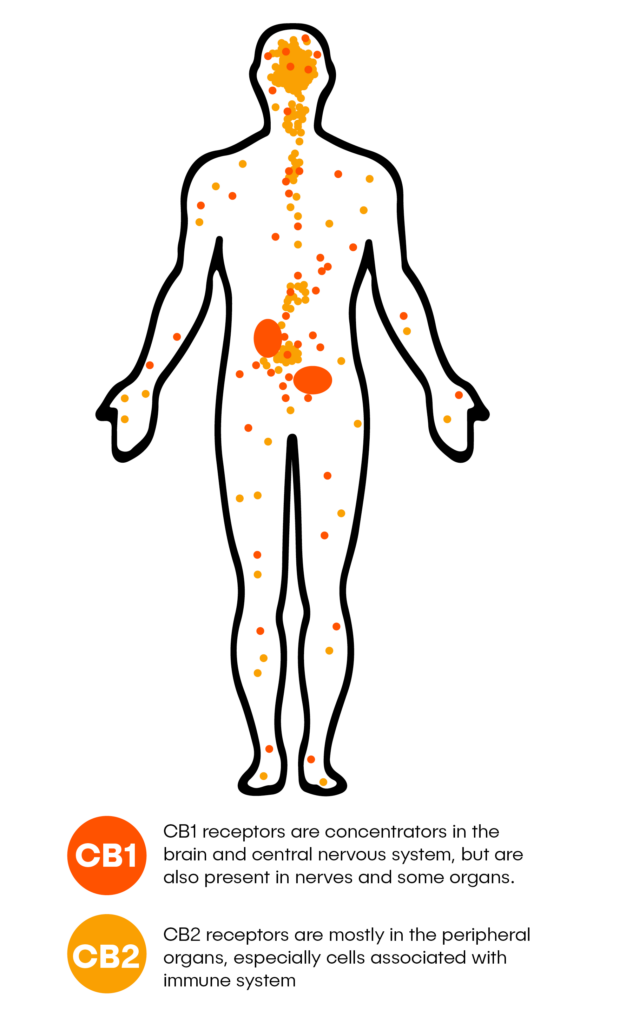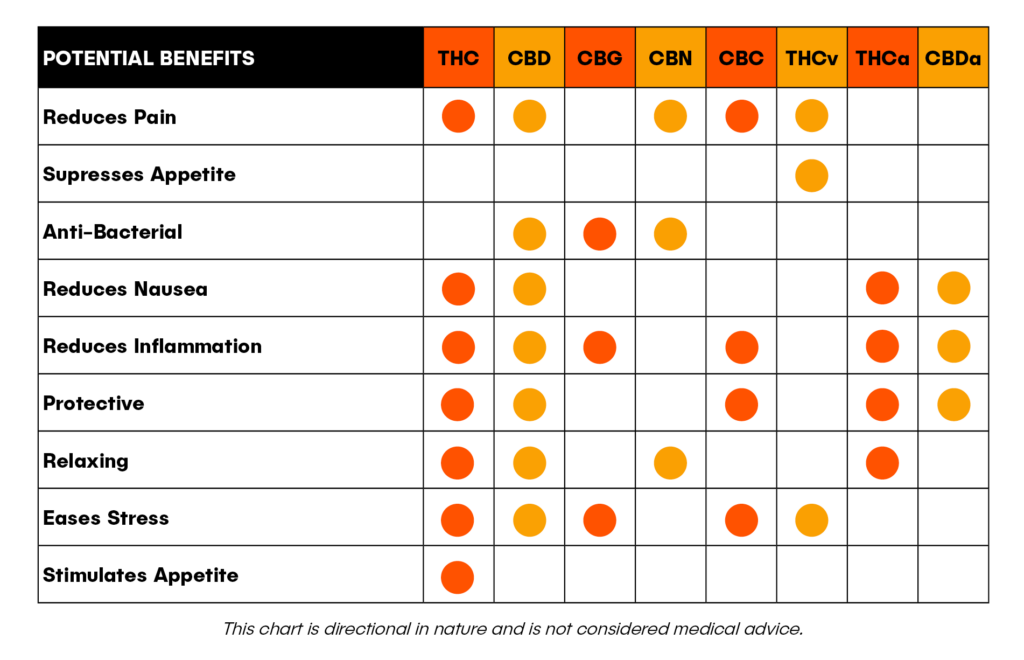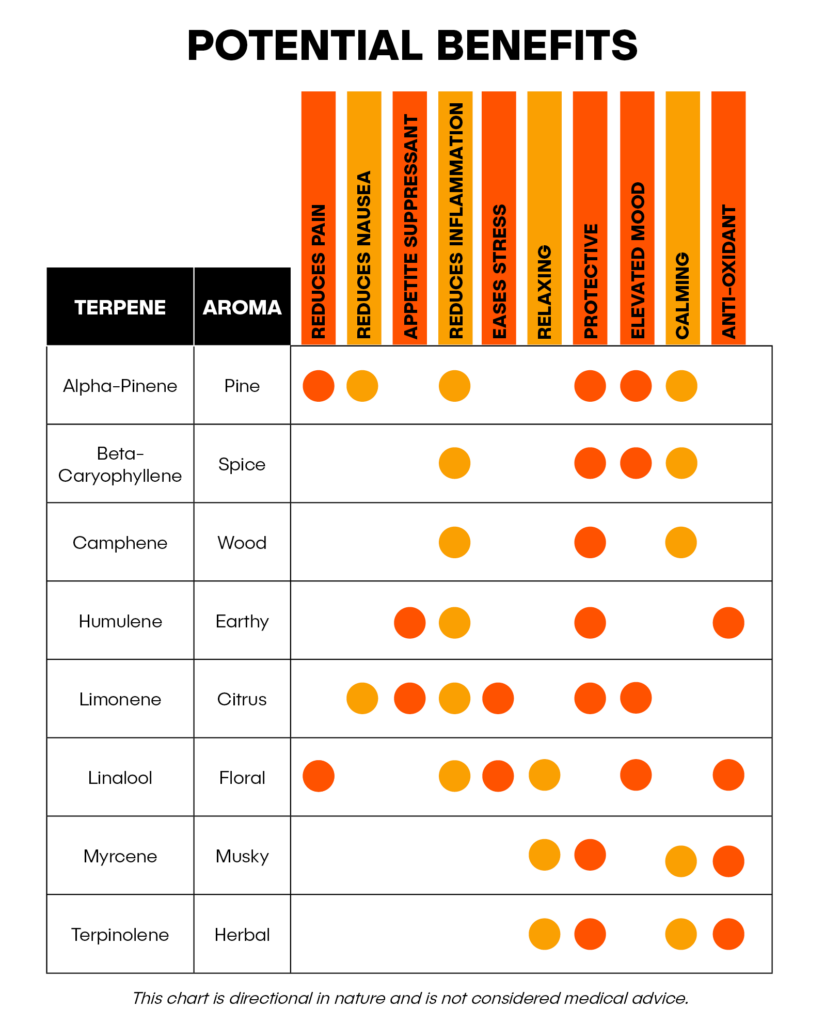
While at a dispensary, you might have heard the term cannabinoids being used. You’ve probably heard everything about its two most popular cannabinoids, THC and CBD. But these aren’t the only cannabinoids produced by the plant. In this blog, we’ll cover what cannabinoids are, what cannabinoids do, and the types of cannabinoids.
What Are Cannabinoids?
Cannabinoids are a class of compounds produced in the resin glands of the cannabis plant. THC (tetrahydrocannabinol) and CBD (cannabidiol) are the two most well-known cannabinoids, but cannabis produces dozens of others such as THCV, CBN, and CBC. Cannabinoids are not only found in cannabis; they are also produced naturally in the body. However, the cannabinoids produced in our bodies—called “endocannabinoids”—behave differently than those found in cannabis, which is why we do not feel high off our own endocannabinoid supply.
 What Do Cannabinoids Do?
What Do Cannabinoids Do?
In the human body, cannabinoids interact with a natural biological system called the endocannabinoid system (ECS). This system is believed to play a significant role in regulating biological functions such as sleep, appetite, and our mood. The body naturally produces its own cannabinoids; however, they do not behave in the same way that plant cannabinoids like THC do. You can learn more about your endocannabinoid system and how it works, Click here to learn more.
Different cannabinoids do different things. When cannabis is consumed, cannabinoids bind to receptor sites throughout our brain (receptors called CB-1) and body (CB-2). Different cannabinoids have different effects depending on which receptors they bind to. For example, THC binds with the CB1 receptors in the brain, which are found in our central nervous system. Their activation has cerebral and behavioral effects which also produces a high or sense of euphoria.
CBD binds with the CB2 receptors, mostly in the peripheral nervous system and associated with the immune system and inflammation response. Activating the CB2 can relax the body, help it repair itself and reduce the sensation of pain without impairing cognition.
Types of Cannabinoids
 Naturally occurring in the cannabis plant, cannabinoids are what give each strain its specific effects. There are dozens of cannabinoids [view types] that are well known, and more are being discovered. These medicinal compounds, unique to cannabis alone, can be very different from each other in terms of their effects and therapeutic benefits. So, if you want to know how your cannabis will affect you, learning about the different cannabinoids is the first step.
Naturally occurring in the cannabis plant, cannabinoids are what give each strain its specific effects. There are dozens of cannabinoids [view types] that are well known, and more are being discovered. These medicinal compounds, unique to cannabis alone, can be very different from each other in terms of their effects and therapeutic benefits. So, if you want to know how your cannabis will affect you, learning about the different cannabinoids is the first step.
The most common cannabinoids found in cannabis is THC, also called tetrahydrocannabinol. THC is responsible for most pf the psychoactive effects that are in the cannabis plant. This cannabinoid is known to stimulate cells in the brain to release dopamine and create a euphoric feeling.
The second-most common active cannabinoid in cannabis is called CBD, also known as cannabidiol. It’s derived directly from the hemp plant, and it produces no psychoactive effects. Per the chart, CBD can be great in helping to reduce pain, reduce nausea, ease stress, and more.
CBG, also called cannabigerol, is called “the mother of all cannabinoids” because it is the first cannabinoid the plant produces. While it’s a less common minor cannabinoid, it may help in reducing inflammation making it useful for recovery and pain management.
CBN, which is short for cannabidiol. CBN can be considered a weaker form of THC, as it does have some mild psychoactive properties. Per the chart, CBN can be a great cannabinoid that has relaxing properties and the potential as a sleeping aid.
THCV, or tetrahydrocannabivarin, is a compound in cannabis that offers a unique array of effects and medical benefits that sets it apart from other cannabinoids like THC and CBD. In contrast to THC, THCV may dull the appetite. Additionally, some studies suggest that THCV may help ease anxiety which in turn can help cannabis consumers that suffer from anxiety attacks.
 What is the Difference Between Cannabinoids and Terpenes?
What is the Difference Between Cannabinoids and Terpenes?
Cannabinoids and terpenes are two types of cannabis compounds. Both are produced in the plant’s resin glands but perform different functions. You’re probably wondering to yourself, “If cannabinoids work by interacting with our endocannabinoid system, then what is the role of terpenes?”
Terpenes [view types of terpenes] are aromatic compounds that lend cannabis its many different fragrant scents. Terpenes also play a role in shaping the therapeutic effects of cannabis. There are six well known terpenes that are found not only in cannabis but in other plants.
The six most commonly found terpenes are Limonene, Humulene, Pinene, Linalool, Caryophyllene, and Myrcene. For example, the terpene known as linalool can be found in lavender, which is known to have relaxing properties.
You can use this chart to help determine which products will create your desired effects. Each cannabinoid and terpene have its own set of therapeutic benefits and unique properties, and when consumed together they can enhance each other’s effects.
In this way, they are more effective together than if they are alone. This is referred to as the “Entourage Effect”.
Our dispensary agents at MPXNJ are highly knowledgeable in cannabinoid effects and can help guide you to the right cannabinoid profile for your needs.
Sources:
Disclaimer:
License holder: MPX New Jersey, LLC (MPX NJ)
This product contains cannabis. For use only by adults 21 years of age or older. Keep out of the reach of children. There may be health risks associated with the consumption of this product, including for women who are pregnant, breastfeeding, or planning on becoming pregnant. Do not drive a motor vehicle or operate heavy machinery while using this product. MPX NJ is licensed by the State of New Jersey.